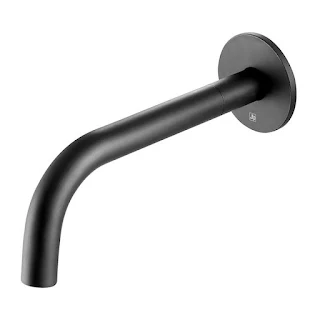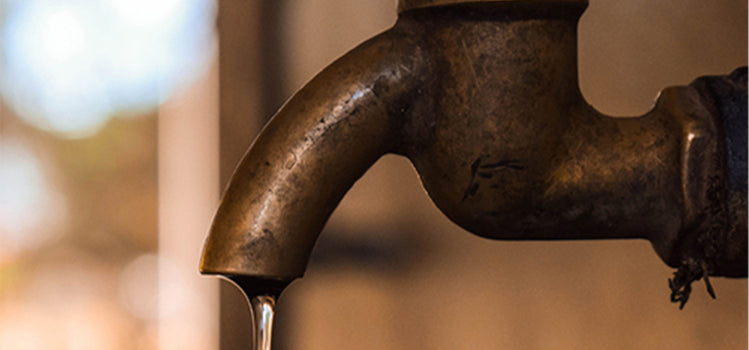Not all taps are suitable for every home, especially if you're dealing with varying water pressure levels. If your water pressure tends to be on the lower side, it's crucial to select taps designed to accommodate this. Fortunately, we've curated a selection of the finest low-pressure basin taps, ensuring compatibility with your home's water flow. Additionally, our collection includes bath taps specifically crafted to handle lower water flow rates, offering a seamless fit for your bathroom. For further insights into water pressure and its impact on your fixtures, this guide provides valuable information.
Determining your water pressure starts with identifying its type.
Gravitational Systems
Gravitational systems operate on a low-pressure setup, which typically comprises a cold water storage tank and a hot water cylinder.
In homes with gravitational systems, it's essential to ensure that water pressure remains within specific limits. For instance, in a first-floor bathroom, the water pressure should ideally not surpass 0.2 bars. Similarly, for the kitchen on the ground floor, the recommended water pressure threshold is 0.5 bars.
Combi Boilers
- Combi boilers operate on a high-pressure system, heating water directly from the mains supply.
- The average water pressure in homes with combi boilers typically ranges from 1 to 2 bars.
- This pressure range is sufficient to support the operation of approximately 95% of modern faucets and showers.
- Water cylinders without vents are commonly used alongside combi boilers.
Water Cylinder with No Vents (System boilers)
- Operates on a high-pressure system, ensuring consistent water pressure throughout the household.
- The water remains at a steady pressure due to the incoming mains pressure, with subsequent heating provided indirectly by the boiler or solar panels.
- This setup offers flexibility in selecting brassware, allowing homeowners to choose fixtures according to their preferences and requirements.
Here's a guide on how to check your water pressure:
1. Seek Professional Help : Instead of relying solely on online tutorials or DIY fixes, it's advisable to contact your water provider. Many issues can be effectively resolved through a professional inspection of your pipes. A specialist can assess your home's water pressure needs and make adjustments accordingly.
2. Consider Pressure Measurement Tools : If you prefer to manually check your water pressure, you can invest in pressure measurement equipment. Attach this tool to an outside tap, such as a hose tapping, to gauge the pressure accurately. One meter typically equals one inch.
3. Use a Container and Timer : Prepare a container with a capacity of 1-2 liters and a timer. Set the timer for 6 seconds and place the container beneath your sink tap. Turn on the tap and allow it to fill the container for the specified time. Repeat this process for 10 seconds and observe the flow rate.
4. Interpret the Results : If the flow rate falls below 10 liters per minute, it indicates low pressure. Flow rates between ten and fifteen liters per minute are generally acceptable. If the flow rate exceeds fifteen liters per minute, the pressure is considered adequate.
5. Check Your Shower : You can also use the same method to assess the water pressure in your shower. Repeat the process described above while running the shower to determine the flow rate and assess the pressure levels.
Why Use Low-Pressure Taps
In order to spare you from a lengthy discourse on the intricacies of taps, I'll keep it concise. Low-pressure faucets are compatible with low water pressure systems that employ rapid water heating technology.
These heating systems are designed to allow only a minimal amount of air pressure to reach the heater. Using a high-pressure faucet to fill the tank with water could obstruct the pressure flow and potentially lead to leaks in the tank.
Opting for low-pressure faucets can contribute to better household management, particularly in terms of water conservation. These faucets facilitate greater water savings, making them a practical choice for efficient water usage in your home.
Low-Pressure Water Systems
Gravity-fed
Gravity-fed systems are prevalent in the majority of UK households, characterized by their reliance on gravity to move water throughout the plumbing system. In these systems, the hot-water chamber is typically situated separately from the water tank, often located in the loft area. As the name suggests, gravity serves as the driving force behind the water movement, with the lower parts of the house experiencing less pressure compared to higher levels.
To understand how gravity-fed systems operate, one can turn to Newton's law of universal gravitation, which illustrates how gravity attracts particles and objects toward the ground. Similarly, in gravity-fed plumbing systems, water moves downwards under the influence of gravity, following the path of least resistance.
Typically, gravity-fed systems are associated with low-pressure water supplies. Residents relying on gravity-fed systems usually experience water pressures around 0.5 bars at their highest setting. This modest pressure level may vary depending on factors such as the height of the water tank and the efficiency of the plumbing infrastructure.
Mix (combi).
Typically mounted on walls, mix (combi) water systems differ from traditional setups as they lack water storage tanks. Instead, water is directly supplied through the main channel.
Mixed systems serve the vital function of regulating water pressure throughout the entire household, maintaining it within the range of 1 to 1.5 bars. This adjustment ensures consistent water pressure for various purposes, enhancing the overall efficiency and convenience of the water supply system.
Low-Pressure Tapsawwd
Wall Mounted Basin Taps
These distinctive taps offer more than just cleanliness in your bathrooms; they also deter buildup. Featuring cross lever handles, these taps boast adjustable water pressure, allowing for personalized control over your water flow.Basin Mixer Taps
With basin mixer taps, you can enjoy complete control over your bathing experience and water usage.
One exemplary option is the Chester dual pinch handle basin mixer by Tapron and Goldbathroom , available in chrome with a convenient pop-up waste feature.
The Chester twin pinch handles basin mixer with popup waste stands out as a prime example. Featuring two distinct water control units, this mixer ensures that cold and warm water remain separate, providing optimal temperature control.
If you're experiencing issues with dripping taps in your gold bathroom due to low water pressure, you might find this comprehensive DIY guide on how to fix dripping taps helpful.





